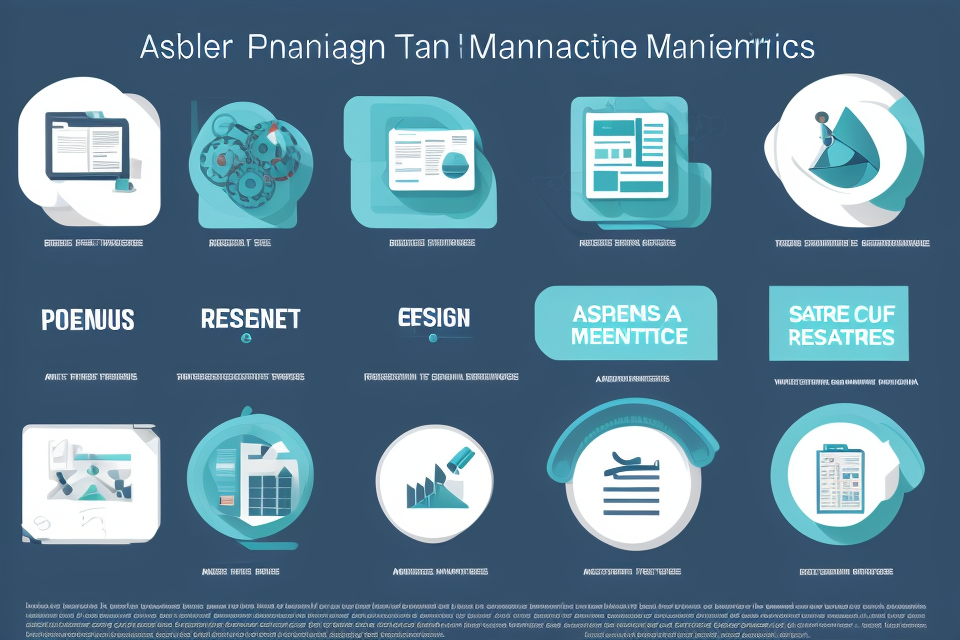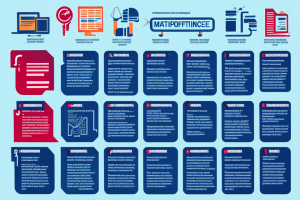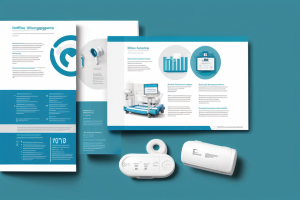
Preventive maintenance is a crucial aspect of any equipment or machine’s lifecycle. It is a scheduled task that helps in maintaining the equipment’s optimal performance and preventing breakdowns. There are four main types of preventive maintenance: condition-based, time-based, predictive, and proactive. Each type has its unique benefits and should be implemented according to the specific needs of the equipment. This article will delve into each type of preventive maintenance, discussing its advantages and disadvantages. Whether you’re a machine operator or a maintenance manager, understanding these types of preventive maintenance is essential for keeping your equipment running smoothly.
Preventive maintenance is an essential practice for ensuring the longevity and optimal performance of equipment and machinery. There are four main types of preventive maintenance: condition-based, time-based, predictive, and proactive. Condition-based maintenance involves monitoring equipment for signs of wear or damage and performing maintenance when necessary. Time-based maintenance involves scheduling maintenance at regular intervals, regardless of the equipment’s condition. Predictive maintenance uses data and analytics to predict when maintenance will be needed, allowing for more efficient and effective maintenance scheduling. Proactive maintenance involves identifying potential issues before they become serious problems and addressing them before they cause downtime or other issues. Each type of preventive maintenance has its own benefits and may be more appropriate for certain types of equipment or industries. Overall, a combination of these maintenance strategies can help businesses maximize the efficiency and longevity of their equipment while minimizing downtime and costs.
Type 1: Condition-Based Maintenance
Introduction to Condition-Based Maintenance
Condition-based maintenance (CBM) is a proactive maintenance strategy that aims to optimize equipment performance and lifespan by performing maintenance tasks based on the actual condition of the equipment. CBM focuses on monitoring the equipment’s physical and functional parameters, such as temperature, vibration, and wear, to determine when maintenance is required. This approach can help organizations reduce downtime, improve efficiency, and extend the lifespan of their equipment.
How Condition-Based Maintenance Works
CBM typically involves the following steps:
- Install sensors or monitoring devices on the equipment to collect data on various parameters.
- Set up alarm thresholds for each parameter based on the equipment’s normal operating conditions.
- Monitor the collected data in real-time, and receive alerts when the thresholds are exceeded.
- Schedule maintenance tasks based on the alerts, the severity of the issue, and the predicted remaining useful life of the equipment.
Equipment That Benefits from Condition-Based Maintenance
Many types of equipment can benefit from CBM, including:
- Rotating equipment, such as pumps, motors, and compressors
- High-value assets, such as manufacturing lines, turbines, and generators
- Critical systems, such as HVAC, electrical power distribution, and fire protection systems
Advantages and Disadvantages of Condition-Based Maintenance
Advantages:
- Reduced downtime by identifying potential issues before they lead to equipment failure
- Improved equipment lifespan by performing maintenance tasks at the right time
- Better asset utilization by scheduling maintenance tasks based on actual equipment condition
- Enhanced safety by identifying potential hazards and addressing them proactively
Disadvantages:
- The cost of implementing and maintaining a CBM system can be high
- CBM requires skilled personnel to install and maintain the monitoring equipment and analyze the collected data
- Some equipment may require frequent maintenance, which can be time-consuming and costly
- The system may generate false alarms, leading to unnecessary maintenance work and potential equipment downtime
Type 2: Time-Based Maintenance
Time-based maintenance is a type of preventive maintenance strategy that involves scheduling equipment maintenance activities based on a predetermined time interval, regardless of the equipment’s condition or usage. This approach assumes that all equipment will eventually wear out or break down, and maintenance should be performed before the failure occurs.
How does it work?
In time-based maintenance, a fixed interval is set for each piece of equipment, and maintenance activities are performed at that interval. The intervals can range from hours, days, weeks, or months, depending on the equipment’s criticality and usage. The intervals are usually determined by the manufacturer’s recommendations or industry standards.
Examples of equipment that benefit from time-based maintenance
Equipment that operates continuously or experiences heavy usage, such as manufacturing machines, transportation vehicles, and HVAC systems, benefit from time-based maintenance. Additionally, equipment that requires regular inspections, such as fire protection systems, electrical panels, and elevators, also benefit from this approach.
Advantages of time-based maintenance
- Ensures regular maintenance and reduces the risk of equipment failure.
- Provides a consistent maintenance schedule, making it easier to plan and budget for maintenance activities.
- Helps maintain the warranty of the equipment.
- Improves equipment reliability and extends its lifespan.
Disadvantages of time-based maintenance
- Maintenance activities may be performed when they are not needed, resulting in unnecessary costs.
- May not take into account the actual condition of the equipment, leading to over-maintenance or under-maintenance.
- Can result in unexpected downtime if maintenance activities are not planned well.
Overall, time-based maintenance is a reliable and straightforward approach to equipment maintenance, but it is essential to consider the equipment’s actual condition and usage to ensure cost-effectiveness and equipment reliability.
Type 3: Usage-Based Maintenance
Usage-based maintenance is a type of preventive maintenance strategy that focuses on maintenance activities based on the actual usage of equipment or assets. This approach takes into account the specific operating conditions, environment, and usage patterns of each piece of equipment, enabling a more tailored and effective maintenance program.
How it works
Usage-based maintenance typically involves monitoring the equipment’s performance data, such as operating hours, power consumption, and temperature readings, to identify potential issues before they become critical. By analyzing this data, maintenance schedules can be tailored to the specific needs of each piece of equipment, reducing unnecessary maintenance activities and increasing equipment uptime.
Examples of equipment that benefit from usage-based maintenance
Equipment that experiences variable usage, such as production lines or transportation vehicles, can benefit from usage-based maintenance. For example, in a manufacturing plant, a production line may require more frequent maintenance if it operates at high speeds or runs 24/7. By using usage-based maintenance, maintenance activities can be scheduled when the line is not in operation, minimizing downtime and maximizing production.
Advantages and disadvantages of usage-based maintenance
Advantages
- More tailored maintenance programs lead to increased equipment uptime and reduced downtime.
- Usage-based maintenance can reduce maintenance costs by minimizing unnecessary maintenance activities.
- By monitoring equipment performance data, potential issues can be identified before they become critical, reducing unplanned downtime.
Disadvantages
- Usage-based maintenance requires the collection and analysis of large amounts of data, which can be time-consuming and expensive.
- This approach may not be suitable for equipment with consistent usage patterns, as it may not provide any additional benefits over time-based maintenance.
- There is a risk of missing potential issues if the data collected is not accurate or complete.
Type 4: Predictive Maintenance
Predictive maintenance is a type of preventive maintenance that uses data analysis and machine learning algorithms to predict when equipment is likely to fail. It is a proactive approach that allows maintenance teams to schedule repairs before a breakdown occurs, minimizing downtime and reducing costs.
How it works:
Predictive maintenance works by collecting data from various sources, such as sensors, machines, and equipment logs. This data is then analyzed using machine learning algorithms to identify patterns and predict potential failures. The maintenance team can then take proactive measures to prevent the failure from occurring, such as replacing parts or conducting repairs.
Examples of equipment that benefit from predictive maintenance:
Predictive maintenance can benefit a wide range of equipment, including:
- Machines and equipment in manufacturing plants
- Electrical and mechanical systems in buildings
- Aircraft and vehicles
- Turbines and generators in power plants
Advantages of predictive maintenance:
The advantages of predictive maintenance include:
- Reduced downtime: By predicting and preventing equipment failures, companies can minimize downtime and keep their operations running smoothly.
- Cost savings: Predictive maintenance can save companies money by reducing the need for unplanned repairs and replacements.
- Improved safety: Predictive maintenance can help prevent accidents and equipment failures that could harm workers or the environment.
Disadvantages of predictive maintenance:
The disadvantages of predictive maintenance include:
- Cost: Implementing a predictive maintenance program can be expensive, as it requires specialized software and expertise.
- Data quality: The accuracy of predictive maintenance depends on the quality of the data being collected and analyzed. If the data is incomplete or inaccurate, the predictions may be incorrect.
- Privacy concerns: Predictive maintenance may require access to sensitive data, such as equipment logs and maintenance records, which could raise privacy concerns.
FAQs
1. What is preventive maintenance?
Preventive maintenance refers to a series of tasks that are performed on a regular basis to prevent equipment or facility failures and to maintain their optimal performance. It is a proactive approach to maintenance that aims to prevent costly repairs and downtime.
2. What are the four main types of preventive maintenance?
The four main types of preventive maintenance are:
* Condition-based maintenance (CBM): This type of maintenance is based on the current condition of the equipment or facility. It involves monitoring the equipment or facility and performing maintenance tasks when specific conditions are met.
* Predictive maintenance (PdM): This type of maintenance uses data analysis and predictive modeling to anticipate when maintenance will be needed. It helps to identify potential problems before they become serious and can cause equipment or facility failures.
* Scheduled maintenance: This type of maintenance is performed on a regular basis, regardless of the current condition of the equipment or facility. It is often based on time or usage intervals and is designed to prevent equipment or facility failures.
* Proactive maintenance: This type of maintenance is similar to scheduled maintenance, but it is based on the actual condition of the equipment or facility. It involves monitoring the equipment or facility and performing maintenance tasks when they are needed, rather than on a fixed schedule.
3. What is the difference between preventive maintenance and reactive maintenance?
Preventive maintenance is a proactive approach to maintenance that aims to prevent equipment or facility failures and maintain optimal performance. Reactive maintenance, on the other hand, is a reactive approach to maintenance that is performed after an equipment or facility failure has occurred. Reactive maintenance is often more costly and time-consuming than preventive maintenance, as it involves repairing or replacing failed equipment or facilities.
4. What are the benefits of preventive maintenance?
The benefits of preventive maintenance include:
* Reduced downtime: By performing maintenance tasks on a regular basis, preventive maintenance helps to prevent equipment or facility failures, which can result in downtime.
* Increased equipment or facility lifespan: Preventive maintenance helps to maintain the optimal performance of equipment or facilities, which can extend their lifespan.
* Reduced maintenance costs: By preventing equipment or facility failures, preventive maintenance can help to reduce the cost of maintenance over time.
* Improved safety: Preventive maintenance can help to identify and address potential safety hazards before they become serious problems.
5. How often should preventive maintenance be performed?
The frequency of preventive maintenance tasks will depend on the specific equipment or facility being maintained, as well as the environment in which it is used. It is important to consult the manufacturer’s recommendations or to work with a maintenance professional to determine the appropriate frequency for preventive maintenance tasks.







